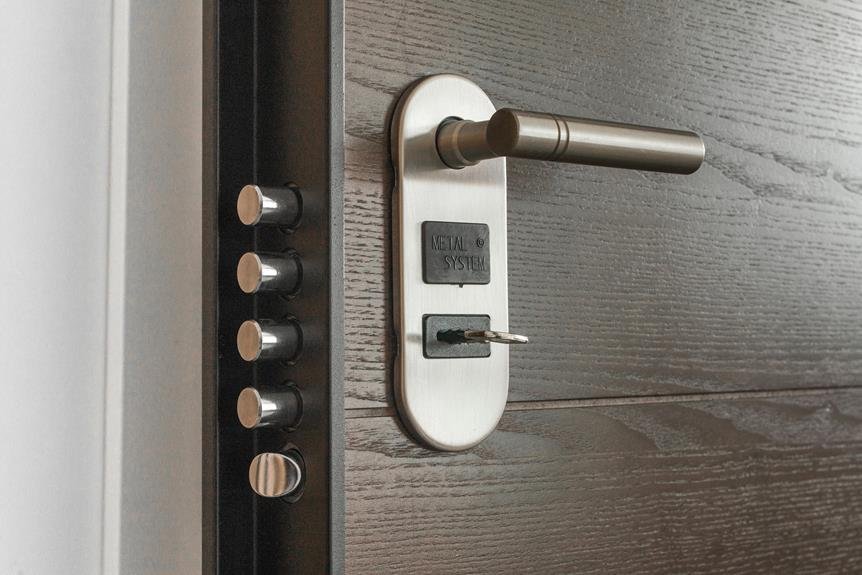
When it comes to safeguarding your privacy with smart security devices, you must be vigilant about implementing key strategies to prevent unauthorized access to your personal data. By taking proactive steps such as securing your Wi-Fi network and regularly updating device firmware, you can establish a solid foundation for protecting your information. However, these initial measures only scratch the surface of what's needed to ensure comprehensive privacy protection in the age of interconnected devices.
Understanding Privacy Risks
By analyzing potential threats, you can better grasp the privacy risks involved in using smart security devices. Smart security devices, like cameras and doorbells, can greatly enhance your home's security. However, they also come with potential privacy vulnerabilities that you should be aware of.
One major privacy risk is unauthorized access to your device. Hackers could potentially gain access to your smart security device and spy on your home activities. This invasion of privacy is a serious concern, highlighting the importance of securing your devices with strong passwords and regular software updates.
Another risk to consider is data breaches. The personal data collected by your smart security devices, such as video footage and device settings, could be compromised if the device's data storage isn't properly secured. It's crucial to research the security measures employed by the device manufacturer and opt for products with robust data encryption features.
Being informed about these privacy risks is the first step towards protecting your privacy when using smart security devices. Stay vigilant and implement necessary security measures to safeguard your personal information.
Securing Smart Doorbell Data
To enhance the protection of your personal data when using smart security devices like doorbells, securing the data collected by these devices is paramount. Smart doorbells are convenient for monitoring visitors and enhancing home security, but they also gather sensitive information that must be safeguarded.
Begin by ensuring that your smart doorbell is connected to a secure Wi-Fi network with a strong password to prevent unauthorized access to the data it collects. Regularly update the doorbell's firmware to patch any security vulnerabilities that hackers could exploit. Additionally, enable two-factor authentication if your smart doorbell offers this feature, adding an extra layer of protection to your data.
Consider reviewing the privacy settings on the associated mobile app to control what data is being shared and with whom. Be cautious about granting excessive permissions that could compromise your privacy. Lastly, familiarize yourself with the manufacturer's privacy policy to understand how your data is being used and stored.
Safeguarding Camera Feeds
Securing the camera feeds from your smart security devices is crucial for maintaining the privacy of your home and personal information. To safeguard your camera feeds, start by setting up strong, unique passwords for each of your devices. Avoid using default passwords as they're easily compromised. Additionally, regularly update your device's firmware to patch any security vulnerabilities that hackers could exploit to access your camera feeds.
Furthermore, make sure to enable two-factor authentication whenever possible. This adds an extra layer of security by requiring a code sent to your phone or email in addition to the password for accessing your camera feeds. It's also essential to secure your home network by using a strong password, enabling network encryption, and hiding your network name (SSID) to prevent unauthorized access to your camera feeds.
Enhancing Network Security
To fortify the overall security of your smart security system, prioritizing the enhancement of network security is paramount. Ensuring the protection of your network is crucial as it serves as the backbone of communication for your smart devices.
Begin by securing your Wi-Fi network with a strong, unique password and encryption protocols like WPA3. Regularly update your router's firmware to patch any vulnerabilities that hackers could exploit.
Implementing network segmentation can isolate your smart security devices from other connected gadgets, reducing the risk of a breach spreading across your network. Consider setting up a virtual private network (VPN) to encrypt your internet connection and safeguard data transmitted between your devices and the internet.
Monitoring network traffic with intrusion detection systems can alert you to any suspicious activity and potential threats. By enhancing your network security, you create a robust shield against cyber threats and protect the privacy of your smart security system.




